Basic Electrical House wiring diagram | Electrical House wiring
Basic Electrical House wiring diagram:
This diagram shows how to connect basic electrical house wiring. In this circuit diagram, we just try to describe how to make a simple house wiring to connect a ceiling fan, 2 lights, a Refrigerator, DP MCB, an Energy meter, sockets, a switch, etc. If you want more clear details please check our video at the below link. In this diagram we just connect input power to the energy meter then DP MCB, then connect all loads and sockets.
Diagram of Basic Electrical House wiring:
Components Need for this Project:
You can get the components from any of the sites below:
- Single Phase Energy Meter [See Buy Click Amazon]
- DP MCB [See Buy Click Amazon]
- 3-Pin Socket [See Buy Click Amazon]
- Switch [See Buy Click Amazon]
- Fan Regulator [See Buy Click Amazon]
- Refrigerator [See Buy Click Amazon]
- Light [See Buy Click Amazon]
- Ceiling Fan [See Buy Click Amazon]
*Please note: These are affiliate links. I may make a commission if you buy the components through these links. I would appreciate your support in this way!
$ads={1}
Read Also:
Components used to make the Electrical House Wiring:
01. Single Phase Energy Meter
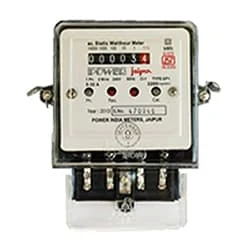 |
| Fig 2: Single Phase Energy Meter |
The measuring device with the help of which the electric power or energy of a circuit is measured is called Energy Meter (Energy Meter). Also called a watt-hour or kilowatt-hour meter. For home appliances, we used a single-phase energy meter. The single-phase energy meter is directly connected between the line and the load. Both coils produce their magnetic fields, when the meter is connected to the supply line, and the load. Energy meters are used in homes and in industrial applications where we want to found that how much energy is being consumed by home appliances and electrical equipment.
02. DP MCB
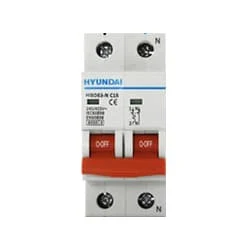 |
| Fig 3: DP MCB |
Double pole MCB can control two wires. This circuit breaker is generally used in single-phase electric lines. Double pole MCB circuit breaker input has two wires supply two wires and an output. In a single-phase line, A double-pole MCB circuit breaker is used to give good production. This circuit breaker is provided through phase and neutral circuit breaker, it is very safe. This circuit breaker is preferred for home appliances. A DP MCB usually trips for 2 reasons 1. Overload 2. Short circuit.
03. 3-Pin Socket
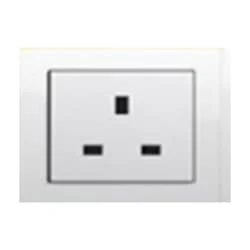 |
| Fig 4: 3-Pin Socket |
A socket is a type of equipment used in electrical wiring lines that always has an electrical connection. According to the need, it can be supplied to the electrical equipment. In case of electric iron, electric hand drill machine and electric hand grinder etc. two-pin socket with earth terminal is used. Also, three-pin sockets are used for electrical appliances that have a metal body and are likely to be electrified. Eg – Refrigerator, room heater, table heater, hot-plate, electric oven etc.
04. Switch
 |
| Fig 5: Switch |
A Single-Pole, Single-Throw (SPST) Switch. It's Got one Output and One Input. The Switch will Either be Closed or Completely Disconnected. SPSTs are Perfect for on-off Switching. They're also a Very Common Form of Momentary Switches. SPST Switches are Commonly Used in a Variety of Electrical Circuits and Applications, Such as Turning on And off Lights, Fans, and Other Appliances. They can Also be Used to Control the Flow of Electricity to Different Parts of a Circuit or to Switch Between Different Circuits Altogether.
05. Fan Regulator
 |
| Fig 6: Fan Regulator |
Reduces fan speed by switching on and off. Reducing the speed of the fan, the power Consumption is also Reduced. It is basically a wire wood resistor-based regulator. The large regulators that were used in the past took up more than half of the switchboard space and were very hot. It looks very small in size. Almost equal to a switch. Electrical regulators are basically made by winding copper wire on an iron core. As Electricity Travels Long Distances Through These Wires, Some of The Electrical Energy is Converted Into Heat Energy.
06. Refrigerator
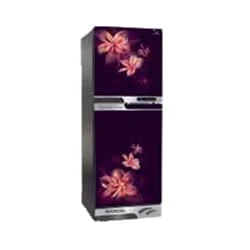 |
| Fig 7: Refrigerator |
A refrigerator (colloquially fridge or freezer) is a popular household device to artificially cool food and drink. A refrigerator (colloquial fridge or freezer) is a popular household device to artificially cool food and drink. It consists of an insulated compartment and a heat pump (mechanical, electrical, or chemical) that draws heat from the inside of the refrigerator to the outside so that the temperature inside the refrigerator is much lower than the temperature of the surrounding environment. Refrigeration is indispensable for food preservation in the developed world. At lower temperatures, bacteria reproduce less and spread less, so food does not spoil easily. The temperature inside the refrigerator is slightly above the melting point.
07. Light
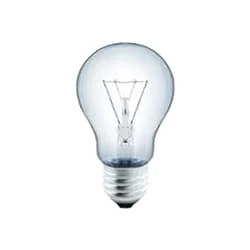 |
| Fig 8: Light |
CFLs work in a completely different way from ordinary lamps, they work by using a different process called fluorescence rather than generating light from heat. A typical light bulb wastes 90% of energy and converts only 10% of energy into light, this is where CFL has the biggest advantage. CFL- Curved or conical glass tube filled with argon and a small amount of mercury vapor. The inner wall of the glass is coated with fluorescent material. CFL- It is manufactured using the principle of creating fluorescent light. CFL- Originally white in color but now the construction and use of CFLs producing colored light has become popular.
08. Ceiling Fan
 |
| Fig 9: Ceiling Fan |
The main driving force behind all ceiling fan systems is the motor used inside the fan. We can also compare it with the soul of a fan. This motor converts the supplied electrical energy into mechanical energy which turns the ceiling fan and gives us air. When current is supplied, the magnetic field formed on the positive half-cycle becomes the reverse magnetic field on the next negative half-cycle. The magnitude part does not rotate and the capacitor is converted to a phase when it is connected to a phase motor or ceiling fan with a helical coil or stationing coil. When power is supplied there is a magnetic difference between the phase currents and the coils (acting as two phases) so that the motor or fan rotates.
Thank You for visiting the website. Keep visiting for more Updates.
$ads={2}
Frequently Asked Questions
What is standard electrical wiring in the house?
Most wires in a modern home electrical system are 12 and 14 gauge. However, for large appliances, you may see 10, 8, and 6-gauge wires. Remember that the smaller the AWG number, the thicker the wire. Large appliances like ovens, washers, and dryers require higher amperage, so they require a different wire gauge to power.
What is the basic wiring diagram?
A wiring diagram shows the relative layout of the components or the wire connections between them. This type of diagram shows the physical relation of all devices in the system, and the conductor terminations between these devices, and is commonly used in motor control installations.
Which wire is best for house wiring?
There are several brands that offer good quality copper wires for house wiring in India, such as Polycab, Havells, or Finolex. These companies are for their reliability, durability, and high-quality products. According to the best electric wire company in India is Polycab.
What are the methods of house wiring?
There are different types of electrical wiring systems such as tee systems, Loop-in systems, cleat wiring, batten wiring, casing and capable wiring, lead Sheathed wiring, and conduit wiring. Electric circuit diagram wiring in residences and buildings is known as domestic circuits.
What are the two basic wiring methods?
Surface conduit wiring is used in industrial applications to connect heavy motors. Concealed wiring is used in residential applications or is the most popular of the basic wiring methods for residential use because it is safer or aesthetically pleasing.
You may like these posts















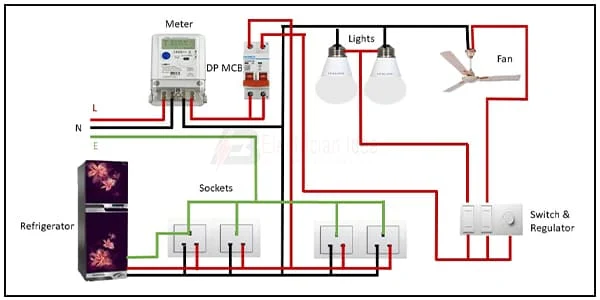
Post a Comment
Do leave your comments